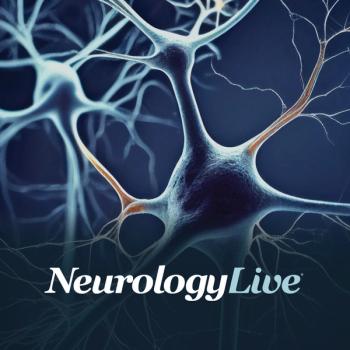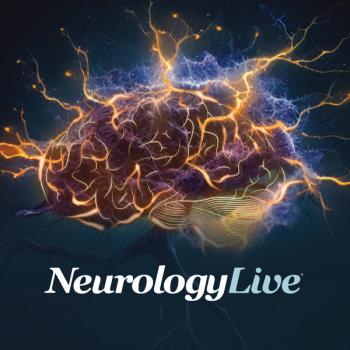
NMOSD
Latest News


Indirect Immunofluorescence May Aid in Detecting Anti-MOG Antibodies in NMOSD, MOGAD
Latest Videos

CME Content
More News

The director of the MS and Demyelinating Disease Center at Texas Tech University Health Sciences Center talked about early diagnosis, timely treatment, and minimizing therapy transition gaps to prevent severe disability in patients with NMOSD. [WATCH TIME: 4 minutes]

A recent study reported that the presence of oligoclonal bands in cerebrospinal fluid of patients with myelin oligodendrocyte glycoprotein antibody-associated disease may be associated with a higher risk of relapse.

A newly developed advanced fMRI-based classification model demonstrated efficacy in distinguishing multiple sclerosis from neuromyelitis optica spectrum disorder, potentially having the ability to improve diagnostic accuracy.

Cerebrospinal fluid lipid profiling revealed potential biomarkers for distinguishing NMOSD from MS and tracking disease activity, offering new insights into neuroinflammatory disease monitoring.

A recent study reported significantly elevated cerebrospinal fluid inflammatory markers in pediatric myelin oligodendrocyte glycoprotein antibody-associated disease during acute phases.

A 5-year retrospective analysis offered insights into disease characteristics, treatment responses, and clinical outcomes of neuromyelitis optica spectrum disorder as well as myelin oligodendrocyte glycoprotein antibody-associated disease.

A significant number of pregnancies in NMOSD patients experienced relapses postpartum, with 50% of pregnancies showing complications for both mother and fetus.

A large registry-based study analyzed treatment patterns and attack risks in neuromyelitis optica spectrum disorder and myelin oligodendrocyte glycoprotein antibody-associated disease.

A unique case highlighted the complex interplay between NMOSD and other autoimmune diseases, demonstrating the challenges in diagnosing and managing the condition.

Test your neurology knowledge with NeurologyLive®'s weekly quiz series, featuring questions on a variety of clinical and historical neurology topics. This week's topic is on neuromyelitis optica spectrum disorder.

A 51-year-old patient with neuromyelitis optica spectrum disorder and hemorrhagic longitudinally extensive transverse myelitis presented a challenging case.

These findings underscore the potential of advanced imaging technologies to detect subtle gray matter differences, aiding in the accurate differentiation between MS and NMOSD.

A new study suggests particulate matter exposure exacerbated the severity of multiple sclerosis and neuromyelitis optica spectrum disorder, with significant clinical and radiological impacts.

Neuromyelitis optica spectrum disorder (NMOSD) is a rare autoimmune CNS condition with distinct subtypes—AQP4-IgG positive, MOGAD, and double-negative—each requiring tailored diagnostic and treatment approaches.

Patients who started therapy immediately after the initial attack had a relapse risk of just 11% at 2 years and 20% at 6 and 8 years, compared to much higher rates (41% at 2 years, 56% at 8 years) in those who delayed therapy until a second attack.

Ultimately, the biomarkers' temporal patterns may help differentiate attacks from remission, with sGFAP being particularly useful in distinguishing genuine attacks from pseudoattacks.

A recent multicenter study showed that dried blood spot testing for neuromyelitis optica spectrum disorder provided high accuracy and practicality in resource-limited settings.

A new study revealed stark racial and socioeconomic disparities in pediatric neuromyelitis optica spectrum disorder outcomes, underscoring the need for targeted interventions.

In a longitudinal study lasting 2 years, impaired test performance in semantic fluency and congruent speed were observed in patients with MOGAD relative to healthy controls.

The phase 1 study, which is currently recruiting, includes a 4-week screening period, a 52-week treatment period, and a 4-year long-term extension to continue to test the effects of HG202.

HNSA-5487 exhibited lower pre-treatment anti-drug antibody levels and reduced ADA responses compared to imlifidase, indicating a favorable immunogenicity profile and strong potential for redosing, with no serious adverse events observed.

In this episode, Greenberg and Bennett provide some perspective on the fluidity of MOGAD diagnosis and how it could potentially change over time as more is understood about neuroimmune disorders. [WATCH TIME: 5 minutes]

In this segment, the duo of neurologists provided a number of informative considerations treating clinicians should take when diagnosing MOGAD, emphasizing careful testing and interpretation of data in this complex process. [WATCH TIME: 4 minutes]

For the majority of patients who were either aquaporin-4-antibody seropositive or seronegative, rituximab was the first disease-modifying therapy administered for neuromyelitis optica spectrum disorder.

The analysis revealed a significant link between the proportion of AQP4 antibody-positive cases and a higher female-to-male sex ratio in NMOSD.


































